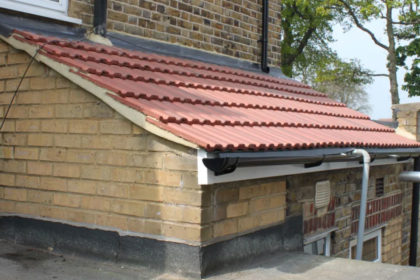 What Are the Most Common Types of Roof Repair?
What Are the Most Common Types of Roof Repair?
Your roof will receive quite a battering while doing its job of keeping you warm and dry in your home. Every bit of damage it suffers means it will be carrying out that job less efficiently, so it’s important to get repairs done quickly.
There are many types of roof repair, but these are five of the most common.
1. Broken or Missing Tiles
Roof tiles can get damaged in various ways, from extreme weather to objects such as tree branches falling on them. Even a slight crack can let water into the roof space, putting extra pressure on the waterproof underlay. If that is torn, your home will start suffering dampness, so it’s vital that damaged or missing tiles are replaced straight away.
2. Damaged Flashing
Flashing is the metal seal around a chimney or any other structure that penetrates the roof, keeping water from seeping in through the gaps. If it’s expertly installed, flashing should last a long time, but weather can eventually work it away from the structure, allowing water in. Any damaged flashing should be repaired or replaced as soon as possible.
3. Punctures on a Flat Roof
A flat roof can also be damaged, for example by the claws of birds or small creatures, or by debris blowing across it. Punctured roofing felt, again, can lead to water leaks, causing damp inside. There are various ways of repairing damaged flat roofs, but the cheapest and most effective is to add a layer of liquid rubber over the existing material.
4. Rotten Soffits or Fascias
Soffits and fascias seal your roof at the eaves, but either strong winds or the build-up of ice or water can cause them to pull away and start to rot, which will spread around the roof. Damage to your soffits or fascias should be repaired as soon as possible, but the best cure is prevention. If your soffits and fascias are made of UPVC, instead of wood, you can avoid them rotting.
5. Blocked or Broken Guttering
The job of the guttering is to direct water running off the roof through the downpipes to the drain, preventing it from pooling on the roof and causing damage. However, it can easily get clogged by falling leaves and other debris, preventing it from doing its work. Your guttering needs to be checked a minimum of twice a year, both for clogging and cracks. You may be able to clear the gutters yourself, but repairs are best done by professionals.
Whatever repairs need to be made to your roof, it’s vital to call in an expert roofing firm as quickly as possible — the longer you leave it, the more expensive it’s likely to be in the long run. Give us a call to find out how we can help your roof to carry on doing its job.









